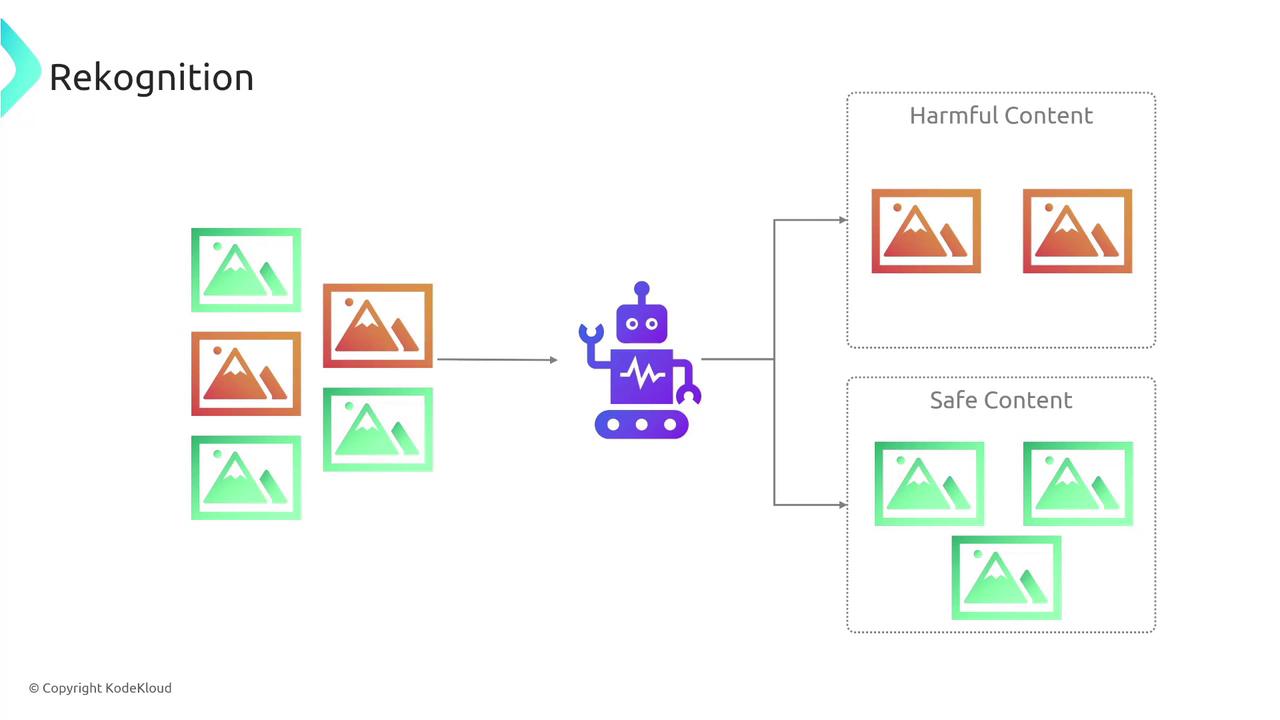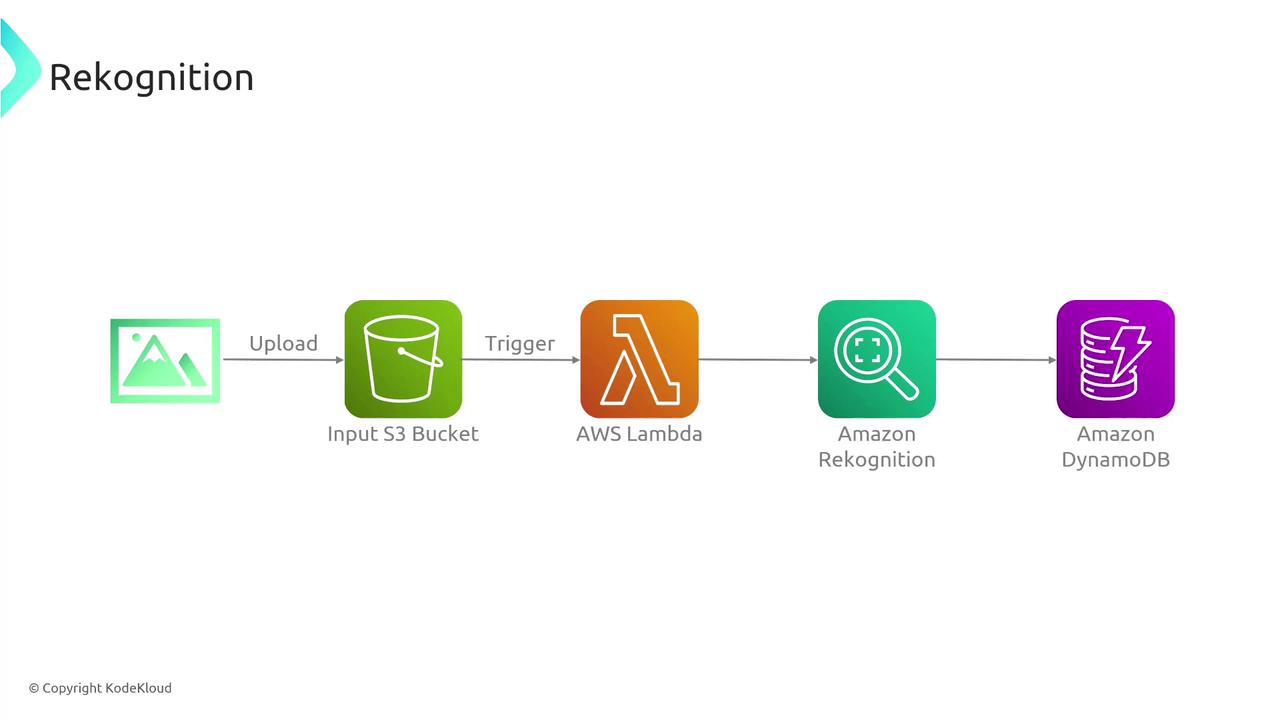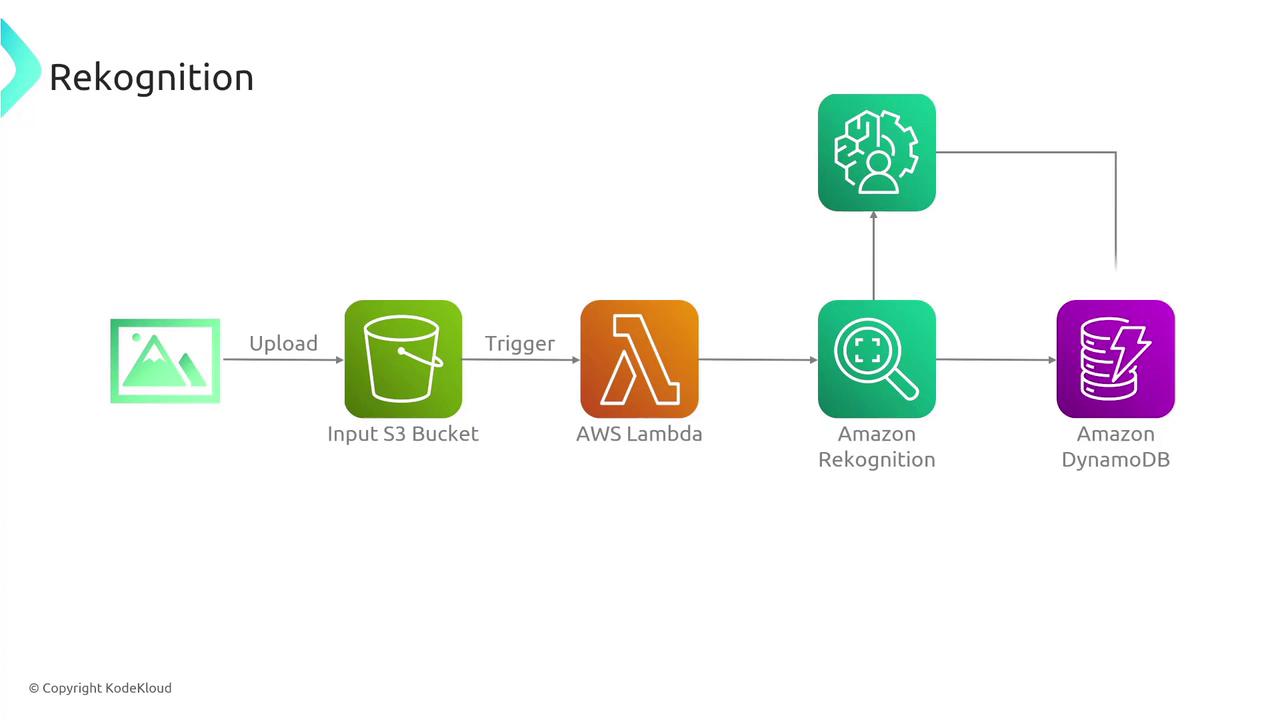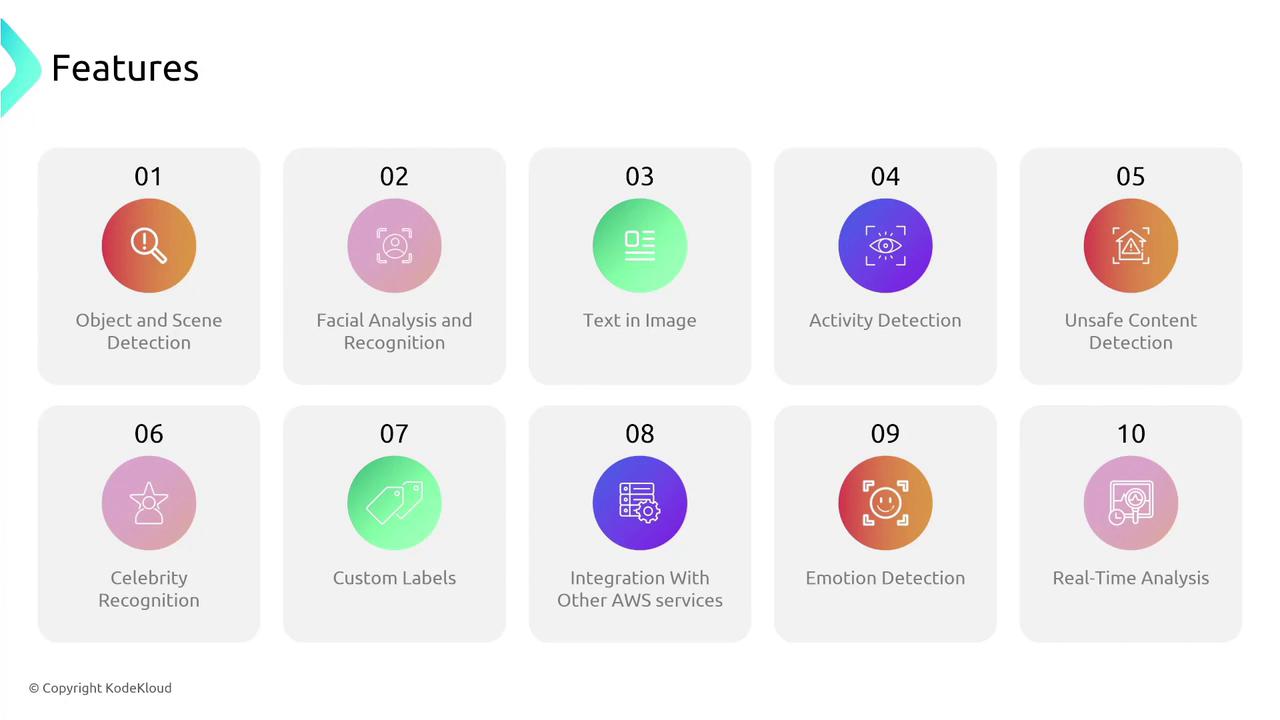AWS Solutions Architect Associate Certification
Services Data and ML
Rekognition
Welcome back! I’m Michael Forrester, and in this article, we dive into Amazon Rekognition—a robust machine learning service designed for comprehensive image and video analysis. Learn how Rekognition simplifies automatic tagging and categorization of images, making multimedia management faster and more efficient.
Imagine you have an extensive image database on your website. Instead of manually assigning tags to every image, Rekognition leverages sophisticated machine learning algorithms to analyze image content automatically. For instance, when an image shows a dog riding a skateboard, Rekognition can intelligently tag it with labels such as "dog," "skateboard," or even "dog riding skateboard." This automated approach is invaluable for streamlining content management and significantly reducing manual effort.
Amazon Rekognition employs deep learning techniques to detect objects, people, text, scenes, and activities in both images and videos. It can even identify inappropriate content, which makes it a crucial tool for content moderation on platforms where user-generated content must adhere to strict guidelines.
Note
Integrating Rekognition can help maintain community standards on platforms like Reddit, Pinterest, or Instagram by quickly filtering unsafe content.

Rekognition is a fully managed service that seamlessly integrates with other AWS services. For example, you can set up an S3 bucket to trigger Rekognition—either directly or via AWS Lambda—each time a new image is uploaded. After processing, Rekognition generates detailed metadata and tags that can be stored in DynamoDB for further analysis. Additionally, for images with lower confidence scores, Amazon Augmented AI (A2I) can be incorporated to allow human reviewers to verify the tags before finalizing them.

For example, if Rekognition returns a confidence score of around 70% for some images, you might opt for human review. In contrast, images with confidence scores above 85–90% can be automatically approved. This hybrid approach ensures a reliable, scalable content moderation workflow through tight AWS integration.

Key Features of Amazon Rekognition
Rekognition provides a variety of powerful features designed to enhance image and video analysis:
- Object and Scene Detection: Recognize diverse objects and settings from furniture to sunsets.
- Facial Analysis: Evaluate facial expressions to determine emotions such as anger, happiness, or sadness.
- Face Matching: Compare and match faces against a stored database to confirm identities.
- Text Detection: Extract text from images, including street signs, product labels, or license plates.
- Activity Detection: Identify actions like writing, eating, or jumping.
- Unsafe Content Detection: Automatically flag content that does not adhere to community guidelines.
- Celebrity Recognition: Identify celebrities and public figures across various industries.
- Real-Time Analysis: Process and analyze data in real time for immediate insights.
- Custom Labels: Train models to detect custom, domain-specific content.
- Advanced Facial Analysis: Determine details such as age range, gender, and nuanced emotions.

Integrating Rekognition with AWS Services
Amazon Rekognition integrates tightly with other AWS products, enabling you to build sophisticated, automated workflows for image and video analysis. Common integrations include:
| AWS Service | Use Case | Example |
|---|---|---|
| Amazon S3 | Storage and event triggering upon new image uploads | Trigger Rekognition using S3 event rules |
| AWS Lambda | Serverless function execution | Process images as they are uploaded |
| Amazon DynamoDB | Storage of processed metadata and tags | Store image analysis results for querying |
| Amazon Augmented AI | Human review for unreliable results | Improve accuracy for low-confidence images |
Warning
Ensure that the confidence score thresholds are carefully calibrated to balance automation with quality control, particularly for sensitive content moderation scenarios.
Conclusion
Amazon Rekognition automates image and video analysis to facilitate efficient content moderation, image organization, and metadata generation. By integrating seamlessly with key AWS components such as S3, Lambda, and DynamoDB—and optionally leveraging Amazon Augmented AI for human review—Rekognition offers a scalable, reliable solution for managing multimedia content.
We hope this comprehensive overview of Amazon Rekognition provides valuable insights into its capabilities and potential applications. Stay tuned for more technical deep dives in our upcoming articles!
For more detailed information on AWS services and machine learning, visit the AWS Documentation.
Watch Video
Watch video content